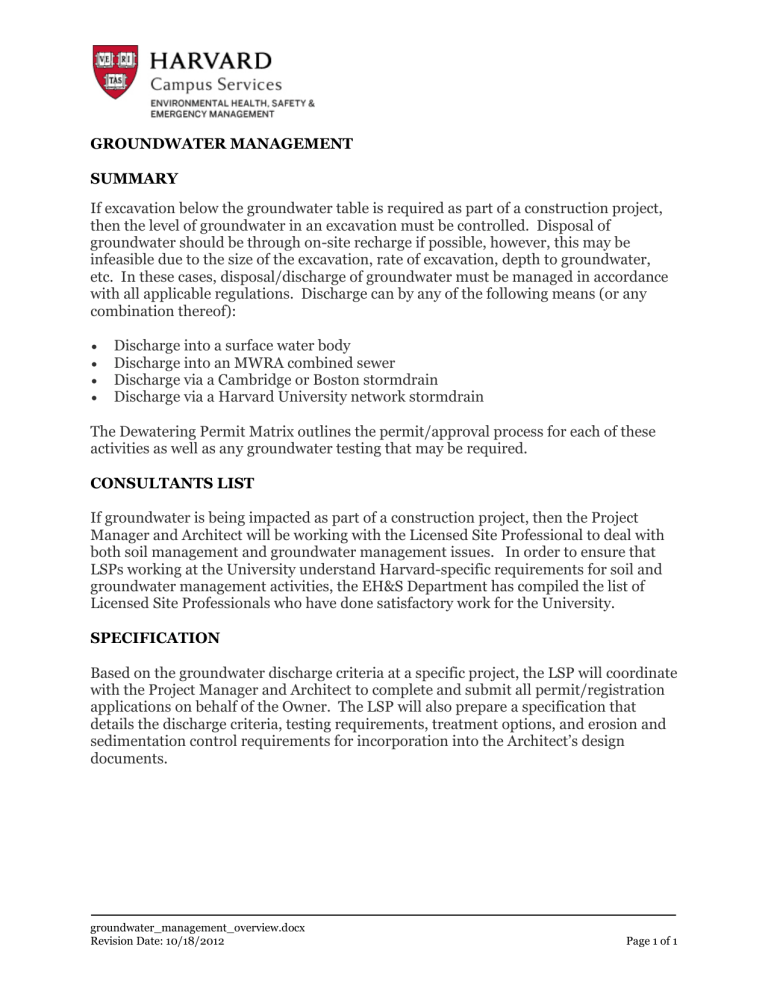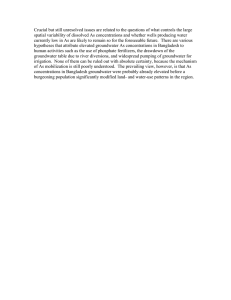
GROUNDWATER MANAGEMENT SUMMARY If excavation below the groundwater table is required as part of a construction project, then the level of groundwater in an excavation must be controlled. Disposal of groundwater should be through on-site recharge if possible, however, this may be infeasible due to the size of the excavation, rate of excavation, depth to groundwater, etc. In these cases, disposal/discharge of groundwater must be managed in accordance with all applicable regulations. Discharge can by any of the following means (or any combination thereof): • • • • Discharge into a surface water body Discharge into an MWRA combined sewer Discharge via a Cambridge or Boston stormdrain Discharge via a Harvard University network stormdrain The Dewatering Permit Matrix outlines the permit/approval process for each of these activities as well as any groundwater testing that may be required. CONSULTANTS LIST If groundwater is being impacted as part of a construction project, then the Project Manager and Architect will be working with the Licensed Site Professional to deal with both soil management and groundwater management issues. In order to ensure that LSPs working at the University understand Harvard-specific requirements for soil and groundwater management activities, the EH&S Department has compiled the list of Licensed Site Professionals who have done satisfactory work for the University. SPECIFICATION Based on the groundwater discharge criteria at a specific project, the LSP will coordinate with the Project Manager and Architect to complete and submit all permit/registration applications on behalf of the Owner. The LSP will also prepare a specification that details the discharge criteria, testing requirements, treatment options, and erosion and sedimentation control requirements for incorporation into the Architect’s design documents. groundwater_management_overview.docx Revision Date: 10/18/2012 Page 1 of 1




